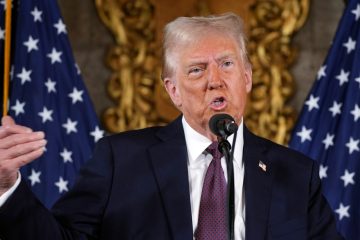The world economy looks dependent on booming America

IT HAS been a nervy few days for financial markets. A sell-off in bond markets, prompted by monetary tightening in America, this week infected global stockmarkets, too. The S&P 500 share-price index fell by over 3% on October 10th, its worst day in eight months. Markets in Shanghai hit their lowest level for nearly four years the next day; those in Japan and Hong Kong closed around 3.5% lower.
At first glance, the sell-off seems odd. The world economy is still growing briskly enough: this week the IMF only slightly trimmed its forecast for world GDP growth for 2018, from 3.9% to 3.7%. But investors are right to fret. Whereas acceleration was synchronised across much of the world in 2017, the global economy’s expansion now looks increasingly unbalanced.
Two divides stand out. The first is between emerging markets, which are suffering from particularly volatile financial conditions, and advanced economies. The cause of this divergence is a strong dollar, which is making emerging markets’ debts that are denominated in the currency costlier to service. The latest casualty is Pakistan. On October 8th it announced that it would seek an IMF bail-out, which is expected to amount to $ 12bn. It joins the ranks of other emerging markets in distress, notably Argentina, which has negotiated a record $ 57bn credit line from the IMF, and Turkey.
Sustained falls in emerging-market currencies and stocks have been painful for investors. Several countries have raised interest rates to stem capital outflows. Yet the damage to the real economy has for the most part been confined to those with large current-account deficits, such as Argentina. From a global perspective, the bigger worry is China. Authorities there are trying to reduce leverage in the financial system at the same time as American tariffs are squeezing their exports (see article). The currency is under pressure; growth expectations are being lowered.
The second divide exists within the ranks of advanced economies. Rich countries seem to be gently slowing, with one big exception: America. There, growth has sped up dramatically, exceeding an annualised rate of 4% in the second quarter of 2018. America is the only large advanced economy in which the IMF projects activity will expand more quickly this year than it did last year.
This acceleration is because of President Donald Trump’s tax cuts. In September the unemployment rate fell to 3.7%, the lowest since 1969; wage growth is slowly but surely rising. Rampant demand is pushing up interest rates. The Federal Reserve has raised short-term rates by two percentage points since it started tightening monetary policy in 2015. This week Mr Trump described the Fed’s policy as “crazy”. The yield on ten-year Treasury bonds has risen by more than in most other rich countries (see chart). It now stands at over 3.2%, higher than at any time since 2011.
America first
These different growth paths could yet separate further, because many of the immediate economic risks threaten countries other than America. One emanates from Italy, where bond yields are also rising rapidly—and not because of a robust economy. Instead, an extravagant budget put forward by its populist coalition government has sparked a confrontation with the European Commission and reignited fears about the sustainability of the country’s huge public-debt burden. The spread between yields on Italian and German ten-year bonds now stands at around three percentage points, its widest in over five years. Those rises will chill the Italian economy. Rising yields have not so far spread beyond Italy’s borders, but further increases could mean that crisis engulfs the euro zone again. Such fears will do no favours to European business confidence, which has already softened this year.
Another threat is a rising oil price. In September the price of Brent crude surpassed $ 80 per barrel for the first time since 2014, driven in part by falling Venezuelan supply and the prospect of American sanctions on Iran. It now stands at around $ 82. Costly fuel used to threaten the American economy. Today, however, it spurs investment in shale rigs. That gives America a natural hedge against oil-price shocks, even though, in the short term, limited pipeline capacity might mean investment responds only slowly.
Finally, there is Mr Trump’s trade war. America will eventually suffer from the distortive effects of rising tariffs, but it is not all that dependent on trade to fuel demand in the short term. Forecasts of the effect of existing tariffs on American growth and inflation predict only a small impact. The result is that the trade war so far also looks like an asymmetric shock—certainly as far as China is concerned.
The danger is that America’s outperformance pushes the dollar even higher, leading to more volatility in global finance and crimping growth in emerging markets. Yet America’s boom will not last for ever. Tax cuts will no longer provide incremental stimulus after 2019. Some forecasters fret that an end to the largesse, together with higher interest rates, may be sufficient to tip the country into recession by 2020. Analysts expect America’s economy, with its ageing population, to expand by less than 2% a year in the long run. That suggests that, unless productivity surges, a slowdown must eventually come.
The question then is whether the rest of the world can withstand, let alone make up for, an eventual slowdown in America. Not long ago, the consensus may have been that it could cope. Now there is more to worry about.
This article appeared in the Finance and economics section of the print edition under the headline “Pulling ahead”









